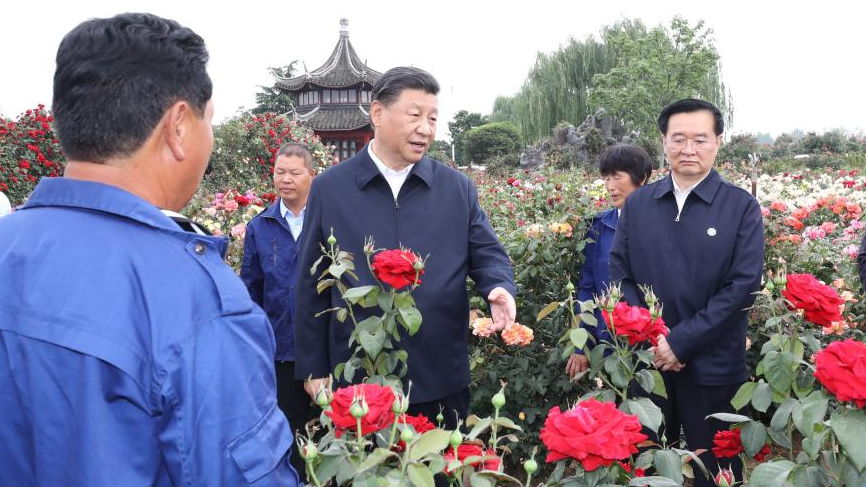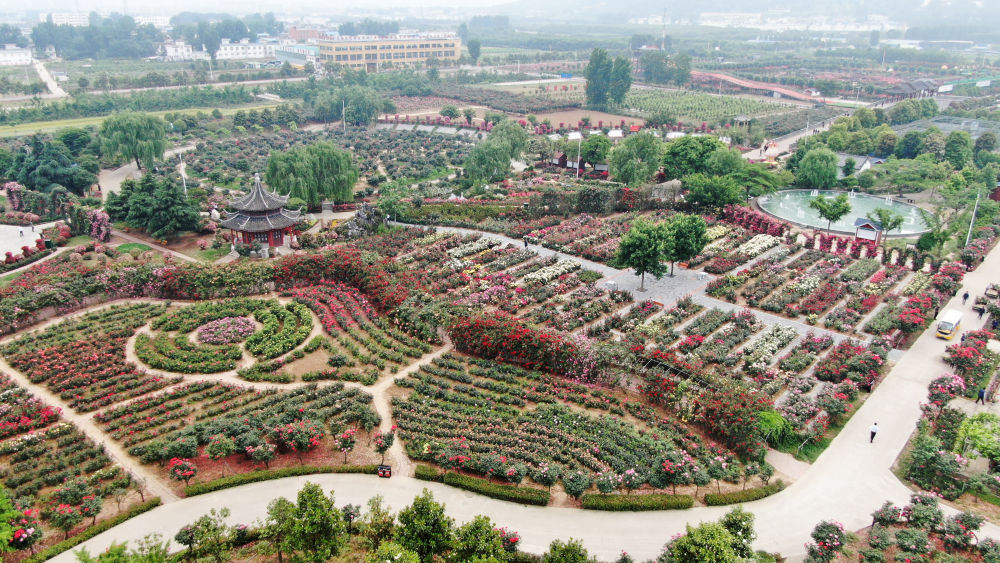
Chinese President Xi Jinping visits a theme park on the Chinese rose, inspecting how Nanyang uses the flower to develop its specialty industries, create more jobs and boost local employment, in Nanyang, central China's Henan Province, May 12, 2021. /Xinhua
Chinese President Xi Jinping visits a theme park on the Chinese rose, inspecting how Nanyang uses the flower to develop its specialty industries, create more jobs and boost local employment, in Nanyang, central China's Henan Province, May 12, 2021. /Xinhua
Editor's note: Dr. John Gong is a professor at the University of International Business and Economics and a research fellow at the Academy of China Open Economy Studies at the University of International Business and Economics (UIBE). The article reflects the author's views, and not necessarily those of CGTN.
Chinese President Xi Jinping has been touring Henan Province for the last three days. From his itinerary, it is clear that his focus and concern have been consistently on rural vitalization, and how to make sure the rural population keeps up with and benefits from China's economic development.
On May 12, President Xi visited a memorial in Nanyang, Henan Province, which is dedicated to a famous medical saint during the Eastern Han Dynasty, one of the early pioneers of traditional Chinese medicine. President Xi has always been a supporter of traditional Chinese medicine, whose industrial development is seen as a major opportunity for rural farmers.
He then visited a Chinese rose park in Nanyang. The park cultivates more than 2,000 different kinds of high-quality varieties of Chinese roses, catering to the entire domestic market as well as export markets in Europe and Asia.
While in Nanyang, President Xi visited another venture built around unique local produce called wormwood or Chinese mugwort. In traditional Chinese medicine, wormwood leaves are used as an antiseptic, expectorant, febrifuge and styptic. The herb is useful for several medical applications, for example, increasing the blood supply to the pelvic region and stimulating menstruation, helping treat infertility, dysmenorrhea, asthma and coughing. Another use is in moxibustion, which I tried myself once to alleviate back pain. The herb is burned in cones in combination with an inserted acupuncture needle. I can testify that it works.

Chinese rose park in Nanyang, central China's Henan Province, May 12, 2021. /Xinhua
Chinese rose park in Nanyang, central China's Henan Province, May 12, 2021. /Xinhua
Yaoyibao, the local company President Xi visited in the afternoon of May 12 in Nanyang, has turned this herb into several industrial products. The next day, Xi visited an agricultural park dedicated to high-value fruit products, including kiwis, grapes and, lotus root. This is yet another industrialized agricultural production model.
There appears to be a consistent theme emerging throughout President Xi's recent tours in the south and now in Henan Province. That is his persistent focus on rural vitalization based on the industrialized agricultural production model as a means of creating jobs for local farmers and increasing their income. In 2019, when he visited Henan, Xi talked about cultivating an industry based on unique local produce. It was Camellia in Xinyang back then that he visited. Now the things I've just mentioned regarding Nanyang.
While he was in Fujian and Guangxi a few weeks ago, the kind of places and things greatly interested him were also the same – local unique products and their industrialized production, and jobs and income for rural farmers. Be it river snail rice noodles in Liuzhou, Guangxi Zhuang Autonomous Region or Shaxian snack eateries in Fujian Province, they are all manifestations of what President Xi calls the concept of "development of modern rural industries with various unique characteristics benefiting farmers."
China's rural vitalization is based fundamentally on economic development. But it is quite unique compared with other countries historically in that local government has a strong role in the agricultural industrialization model whose benefits are meant to be spread broadly to the entire rural farmer population. If there is such a thing as China's development model, the agriculture aspect cannot be summarized better than my previous statement.
(If you want to contribute and have specific expertise, please contact us at opinions@cgtn.com.)

